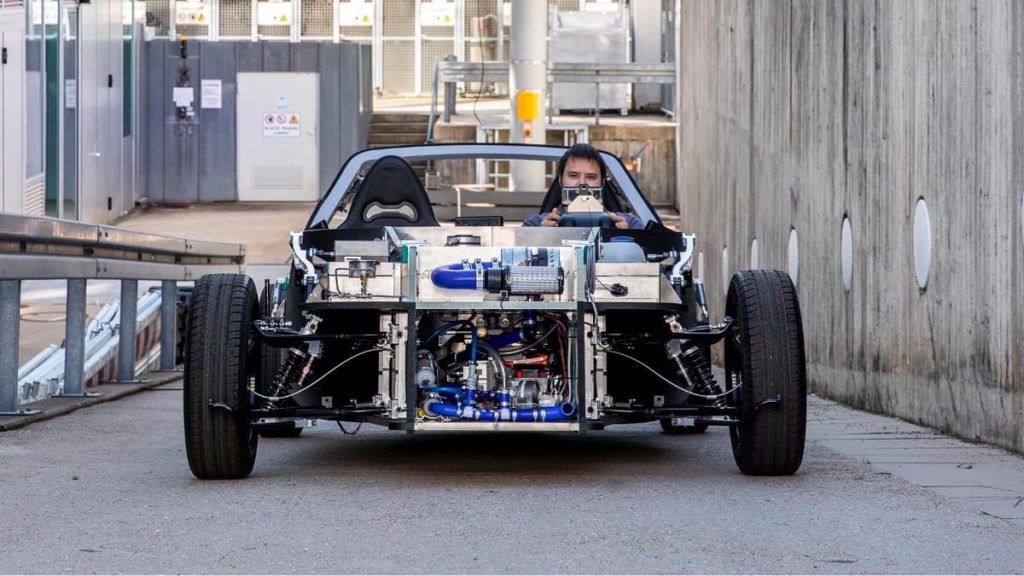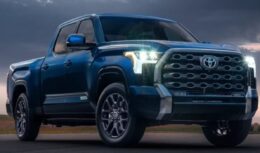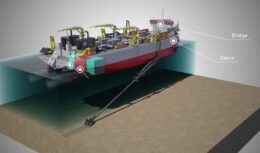
Powered by a hydrogen cell, a car manufactured by a German company could be one of the most coveted hybrids in the world. The vehicle is expected to hit the market in the coming years.
The Safe Light Regional Vehicle – SLRV, the new and innovative car powered by hydrogen with a futuristic design, has been developed to use a high-efficiency fuel cell. In this way, the SLRV developers believe that their brand new electric car will have safe mobility, in addition to saving the use of the planet's resources. In terms of autonomy, the two-seat SLRV can reach 400 km. The new model is indicated for short distance trips.
Read other related news
Light, economical and safe, the new fuel cell car is already highly anticipated by the automotive world
SLRV being assembled – Credits: DLR/Disclosure SLRV in street tests – Credits: DLR/Disclosure SLRV in performance tests by the automaker – Credits: DLR/Disclosure SLRV in final state - Credits: DLR/Disclosure
The Deutsches Zentrum für Luft- und Raumfahrt – DLR (German Aerospace Center) is responsible for the development of the SLRV. According to the Center, the hydrogen cell-powered car is extremely light and very safe, weighing only 90kg of chassis and 450kg of total weight, with the “sandwich” design, offering a sufficiently cozy interior space.
The 'lightweight' car is perfectly matched with the safe and efficient hydrogen fuel cell driving system. With two seats and a space estimated at around 3,8m in length and a low roof, which guarantees minimal aerodynamic resistance, its general architecture conveys lightness and balance, something that other models in the same category, called L7e (light vehicles), are hardly able to successfully achieve.
Also aiming to enter the category of zero emissions vehicles, DLR advances in the development of cars and creates a hybrid model, powered by a fuel/battery “cell”.
The SLRV, in addition to having a light design, has a hybrid propulsion system, which guarantees the maximum possible resource efficiency. The developers of the DLR connected a small 8,5 kW continuous power hydrogen cell to a battery to create the powertrain, which provides an additional 25 kW of power in terms of acceleration.
This laboratory-made combination weighs much less than conventional batteries, providing a range of approximately 400 km, in addition to allowing a top speed of 120 km/h. Inside the vehicle, between the two seats, there is a 39L tank that can store about 1,6 kg of hydrogen.
Modern and compact, SLRV can be an example of mobility and technology
The SLRV is suitable for small displacements, in addition to being indicated for public passenger transport services between neighborhoods, within urban areas, or even intercity, all this due to its efficient hydrogen refueling system.
It is estimated that vehicles of this model could complement local public transport in suburban and rural areas, as well as serving as a second, more environmentally friendly type of car.
When it comes to purchase prices for the SLRV, DLR estimates that the price of the car powered by a hydrogen cell should be around 15.000 euros. Endowed with a maximum mileage of 300.000 kilometers and a useful life of approximately 10 years, its price is equivalent to approximately 10cm/km.
General Motors pulverizes the smallest and cheapest electric car in the world: convertible Mini EV Cabrio reaches 300 km per charge and becomes a sales phenomenon with its price of just 3000 euros
A j SAIC-GM-Wuling produced one of the electric cars that became a phenomenon in China, the Wuling Hong Guan Mini EV. This electric car, the cheapest in the world, is so popular with Chinese drivers that General Motors has made a convertible model for 2022: the new Wuling MINI EV Cabriolet is just three meters long, runs 300 km per charge and reaches 100 km/h.
O tiny vehicle was a bold bet by GM for a strange niche market, in which things that copy the identity of famous products gain notoriety through explicit cloning, as is the case recently announced by Click Petróleo e Gás in which a Chinese automaker cloned the iconic Volkswagen Kombi, shortly after shamelessly manufacturing an electric copy of the Beetle.
GM simply saw 270.000 units sold in just nine months. Headquartered in Liuzhou, Wuling, the GM automaker, is rolling out its sleeves and launching the convertible version of the cheapest electric car in the world, its “brother” Mini EV Cabrio.














Se o Brasil fizesse isso seria crime…
With each passing day I have…
And where is marine biodiversity?…
I hope it sells quickly...
How embarrassing! Before writing any article,…
TO COMPLETE THESE THEY PUT GENERAL WATERMELON🍉 TOMÁS…
Approved. Where to find? What is the estimated price?…
WHAT A DISSERVICE! The solution to waste…